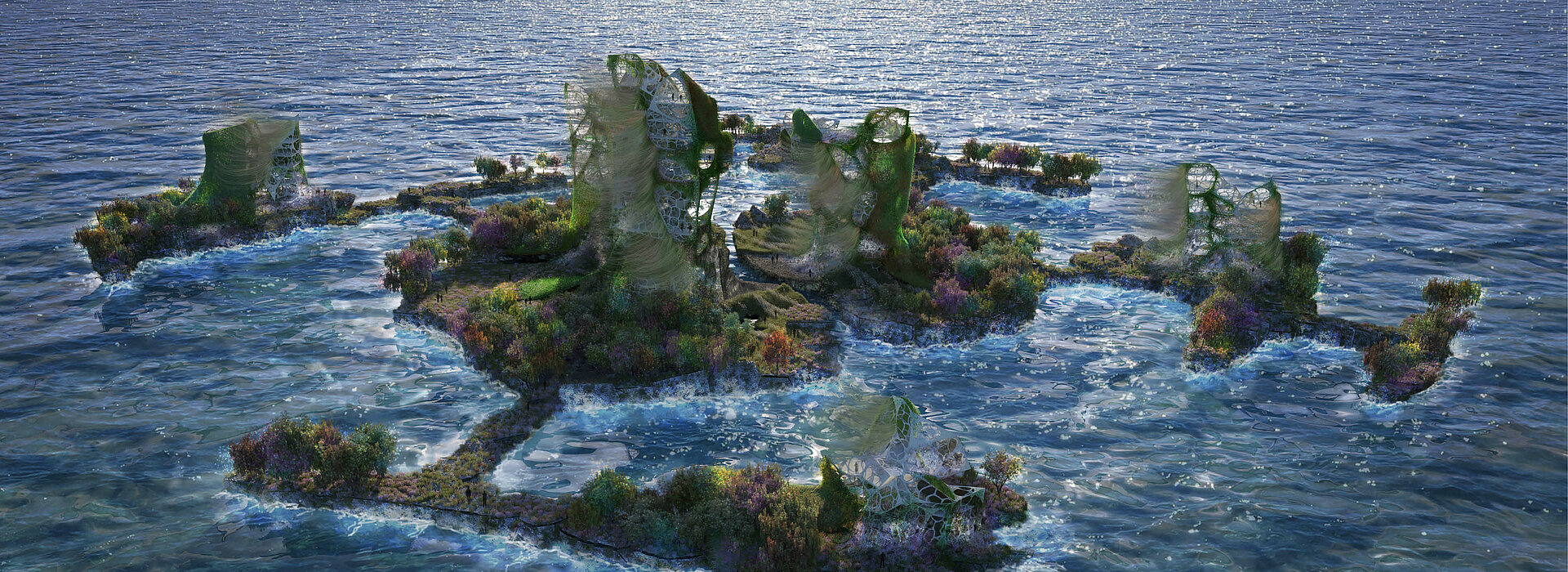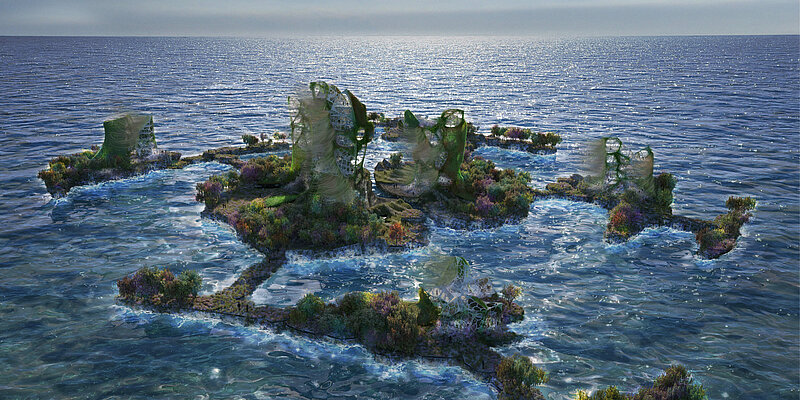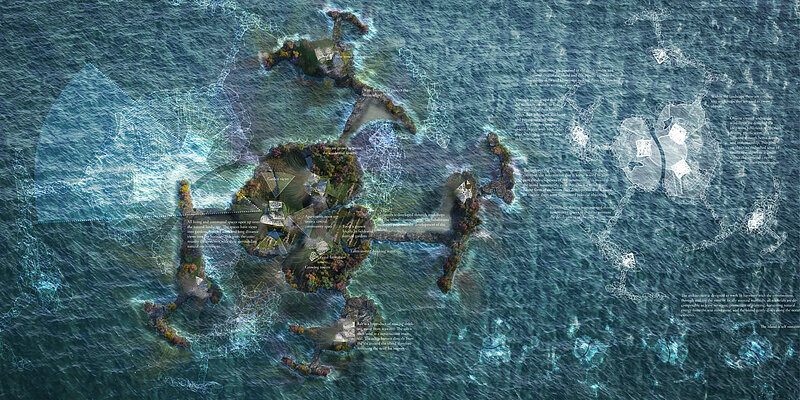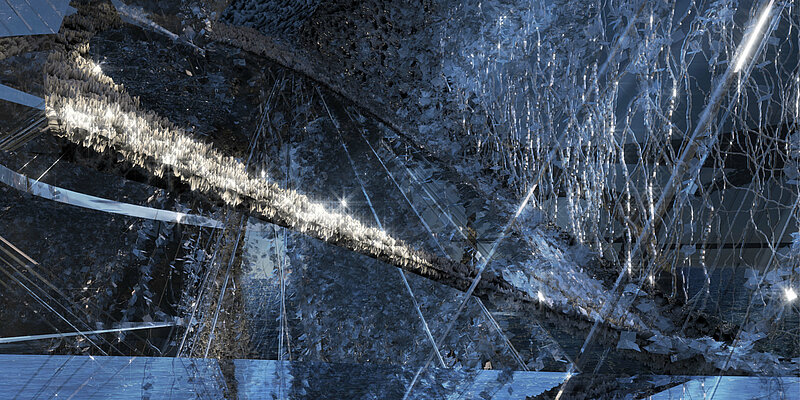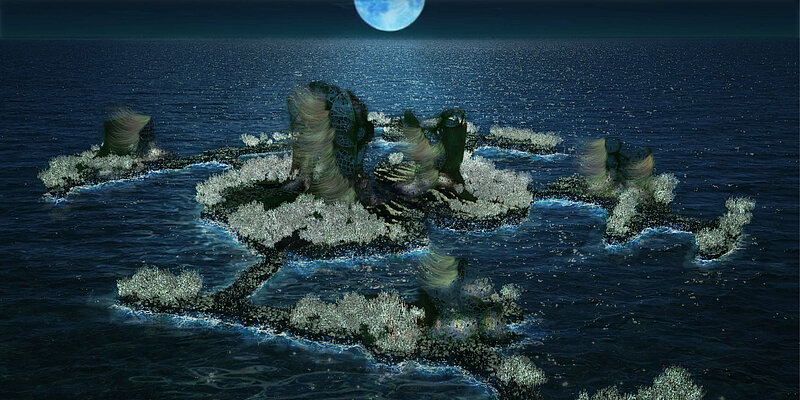Hypothesis An organic growing architecture
- Year2013
- LocationSea
The Island is an organic growing architecture on the sea offering an alternative way to live within a community. The Island is formed from salt and is constantly growing and evolving. The intelligent hair follicles absorb seawater, filtering out the salt in order to provide drinking water for the community. The byproduct of producing drinking water, salt, is used as a construction material for the island. The Island drifts along the Ocean's currents and is self sustained with gardens and creative workshops. The bottom half of the island is where production takes place within salt caves and the top half is where people live within the towers and gardens. At night the gardens light up using Bioluminescent technology, providing a sustainable source of lighting.
Each strand of the hair filaments acts as a capillary used to filter and transfer water and nutrients from the sea to the community above. Energy from the sea is harvest through these hair follicles, absorbing its movement. All the follicles work together as a network system, becoming the arteries and veins of the island providing residents with water and energy. Above water there are naturally formed towers constructed from sea minerals, providing a sustainable and environmentally friendly construction material. This project explores what can be created from the raw materials harvested from our natural environment. Surrounding the towers where people live are gardens and woodlands. The woods provides shelter and the gardens supply the community with food, allowing the island to be completely self sustained and non reliant on import.
The fine hair filaments extract raw materials from the sea and uses them to construct the physical spaces of the island. Deep within the island there are caves constructed from salt and other sea minerals. These materials provide a natural, growing and evolving landscape for the community to live with in.
The island acts as a giant reef. The outer areas of the island act as wave breakers and shelter the centre of the island where people live from rough waters.
The Island is formed from salt and sea minerals giving it a crystal structure. The salt and minerals starts growing under water, as the particles gather and cluster together. Under water sea life starts to attach itself to this crustacean creating the coral reef, following the same process that would happen in nature. The salt structure continuously grows and evolves, and following this development of the coral reef the top of the structure surfaces above water becoming the community's living area on the salt landscape. On this landscape, crystal towers are created where the residents live and plants and trees grow around them.
The stability concept of the Island is based on how an iceberg floats, where most of its mass is under water. The Island is less dense than water and its wide top helps it to float. Wave breakers also support the balance of the Island. The hair follicles growing on the under water reef swims the island along the ocean's currents and supports its upright balance. At the very bottom of the coral reef there is a rudder, which is used to steer and direct the island.
The Island will use bioluminescent science to light up the plants and trees, this will provide a sustainable source of lighting. This concept of lighting is taken from sea creatures such as squids and jelly fish.
